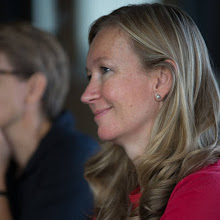Cancer blogs: Gender and Narrative revisited
This morning I have finally finished the draft of a second essay looking at gender and story genre in the sample of cancer blogs I've been analysing for what is now the last year. I have to confess that I'm still not satisified with the paper itself (which was commissioned for a special issue of Genre, edited by Will Slocombe), but as my husband muttered last night, I probably wouldn't be satisfied even if I worked on it for another month. So it's time to send it in, and I have.
In this second piece, I've been trying to problematise the question of gender difference in online communication, largely because of questions that have been raised in the various presentations I've given about this work in the last few months. These relate to critiques of essentialism and debates about whether I can say anything about gender at all, given the lack of guaranteed authenticity in online representation. As I've been reading Cameron and Kulick's (2003) Language and Sexuality, and returning again to Butler's work on drag performativity, both in preparation for an upcoming class for my Language and Gender module. Drawing on their ideas, I've been reframing my linguistic analysis of the blogs using ideas of indexing gender as a means of performing identities, and drawing attention to the multilayered strands of gendered identity itself.
In short summary, in my analysis of gender and genre in the cancer blog samples, I found that in terms of content, the speakers alluded to gendered subjectivity being fragmented under the embodied disruption brought about by critical illness and its side effects. In this sense, their writing represented anatomical performances of gender as unstable, leading them to question what it meant to 'be a woman' or 'be a man' when gendered markers were removed (e.g. hair, breasts, nails). Might we expect some kind of disruption of gendered styles of writing to follow this content? The answer is: I didn't find any. A corpus based analysis (frequency of word types) found no difference, an extensive analysis of transitivity choices found very little. And, when looking at macro-level patterning, the asymmetrical appearance of Reflective Anecdotes (a hyper-evaluated, emotively centred story genre) in just the writing done by the women seemed to index stereotypical gender identities (i.e. affectively oriented femininity v. tough, silent masculinity).
Why should this be? Well, I guess it depends in part on what linguistic evidence you look at. Herring and Paolillo point out that gender differences in CMC tend to show up in socio-pragmatic features, not lexical choice. So it's no suprise that I didn't find any in the corpus searches, but did find it in the use of evaluation devices. Another explanation is that these blog writers were counterbalancing their sense of non-normative gender identity with story styles that evoked highly stereotypical gendered behaviour. Either way, hopefully this discussion will not come over as an essentialist ' women bloggers talk emotively about illness and men don't'.
In this second piece, I've been trying to problematise the question of gender difference in online communication, largely because of questions that have been raised in the various presentations I've given about this work in the last few months. These relate to critiques of essentialism and debates about whether I can say anything about gender at all, given the lack of guaranteed authenticity in online representation. As I've been reading Cameron and Kulick's (2003) Language and Sexuality, and returning again to Butler's work on drag performativity, both in preparation for an upcoming class for my Language and Gender module. Drawing on their ideas, I've been reframing my linguistic analysis of the blogs using ideas of indexing gender as a means of performing identities, and drawing attention to the multilayered strands of gendered identity itself.
In short summary, in my analysis of gender and genre in the cancer blog samples, I found that in terms of content, the speakers alluded to gendered subjectivity being fragmented under the embodied disruption brought about by critical illness and its side effects. In this sense, their writing represented anatomical performances of gender as unstable, leading them to question what it meant to 'be a woman' or 'be a man' when gendered markers were removed (e.g. hair, breasts, nails). Might we expect some kind of disruption of gendered styles of writing to follow this content? The answer is: I didn't find any. A corpus based analysis (frequency of word types) found no difference, an extensive analysis of transitivity choices found very little. And, when looking at macro-level patterning, the asymmetrical appearance of Reflective Anecdotes (a hyper-evaluated, emotively centred story genre) in just the writing done by the women seemed to index stereotypical gender identities (i.e. affectively oriented femininity v. tough, silent masculinity).
Why should this be? Well, I guess it depends in part on what linguistic evidence you look at. Herring and Paolillo point out that gender differences in CMC tend to show up in socio-pragmatic features, not lexical choice. So it's no suprise that I didn't find any in the corpus searches, but did find it in the use of evaluation devices. Another explanation is that these blog writers were counterbalancing their sense of non-normative gender identity with story styles that evoked highly stereotypical gendered behaviour. Either way, hopefully this discussion will not come over as an essentialist ' women bloggers talk emotively about illness and men don't'.
Labels: gender blogs cancer corpus-based


0 Comments:
Post a Comment
<< Home